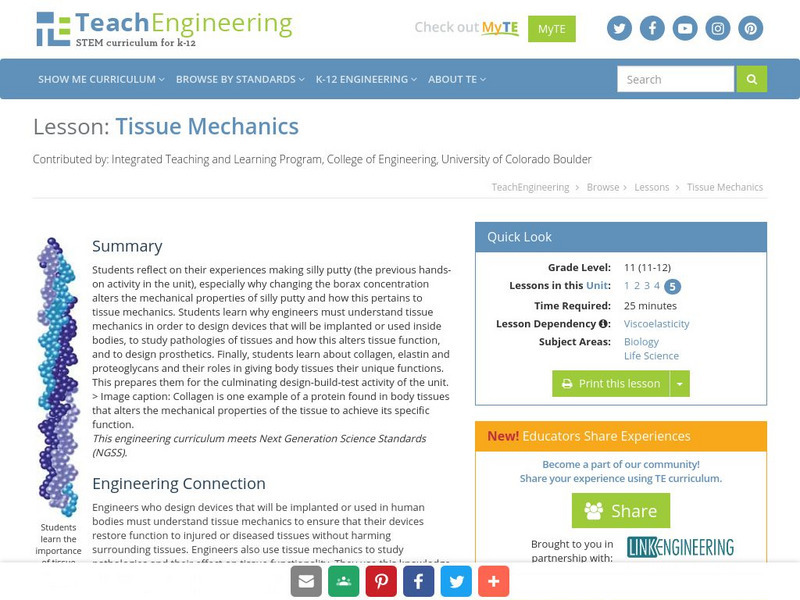Students reflect on their experiences making silly putty (the previous hands-on activity in the unit), especially why changing the borax concentration alters the mechanical properties of silly putty and how this pertains to tissue mechanics. Students learn why engineers must understand tissue mechanics in order to design devices that will be implanted or used inside bodies, to study pathologies of tissues and how this alters tissue function, and to design prosthetics. Finally, students learn about collagen, elastin and proteoglycans and their roles in giving body tissues their unique functions. This prepares them for the culminating design-build-test activity of the unit. < Caption: Collagen is one example of a protein found in body tissues that alters the mechanical properties of the tissue to achieve its specific function.

